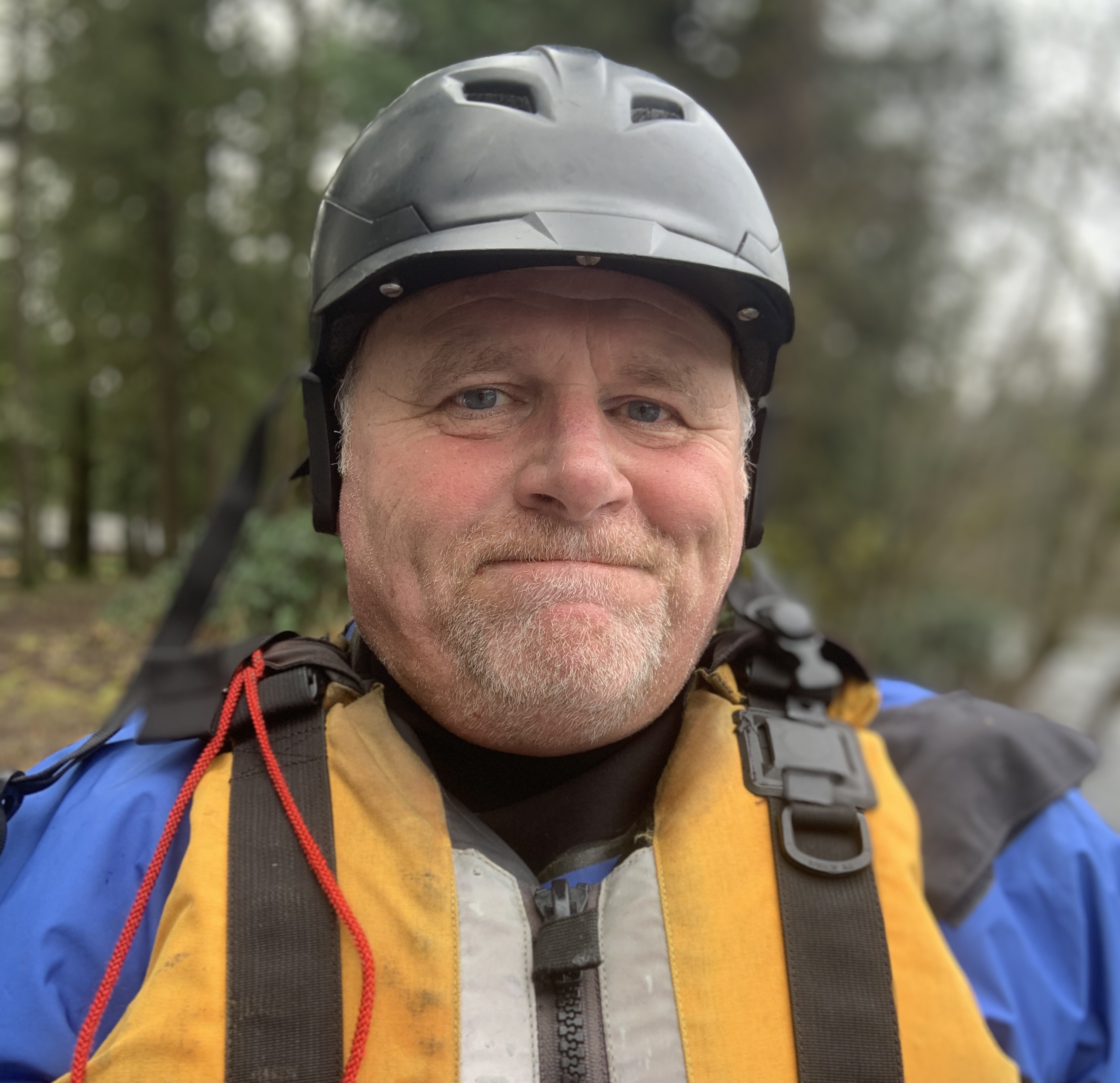President's Corner
Winter Boating
By Scott Harvey

Greetings fellow club members,
Winter Boating: With the arrival of the wet months (Nov thru April), also comes the start of the winter boating season known only to those handful of hardy rafters, cat boaters and paddlers who enjoy getting out 12 months of the year on our Northwestern Rivers. By and large, this includes most rivers that are in the wetter rainforests of the Western Cascade Mountain Range and also the Coastal Mountains of Washington, Oregon and Northern California.
Winter Boating in the Northwest requires skills and safety precautions that do not necessarily challenge fair weather boaters during the warmer months. To begin with, you want to make sure that you are appropriately dressed and equipped for the cold conditions:
- You need a good dry suit with no leaks or ripped gaskets. If your dry suit has either problem, get them repaired before heading to the river.
- Consider comfortable and loose fitting synthetic blend or wool clothing to wear inside your drysuit. Thick mil wetsuits will work out on the river during winter, but take it from me personally who has boated for many years in a wetsuit. Drysuits are a heck of a lot more comfortable and warmer!!
- Good fitting and sturdy river shoes are a must.
- Neoprene gloves are a good idea to have along. I prefer the fingerless neoprene gloves. You still have dexterity with your fingers but your hands stay warm.
- I usually carry a thin neoprene skull cap to wear under my whitewater boating helmet. This is a real life saver when it’s really cold out.
- Make sure your safety river gear including your proper fitting class III or V type Coast Guard approved lifejacket designed with specifications for whitewater boating with a knife and whistle.
- Wear an approved boating whitewater helmet.
- Warm liquids during the winter months can really give you that extra push when needed. Carry a thermos of coffee, tea or spiced cider.
- HotHands pocket hand warmers and insole foot warmers can be a life saver.
Another potential hazard that you need to pay attention to is the unpredictable river flow or river levels that can result from heavy rain storms . Ask yourself, are the rivers trending upward with no accurate estimate of when it will crest? There are numerous online internet sites that keep track of real time river flows, such as the USGS Current Streamflow Conditions for Oregon or Washington. NOAA Advance Hydrologic Prediction Service, WKCC’s Pat Welch’s river levels for Oregon or Washington, Dreamflows Daily Report Data, are a few of the sites I use regularly.
Keeping track of freezing levels and the amount of predicted precipitation arriving through the night and during the day of your boating activity during winter is vital. Is there warm rain arriving and will this impact or amplify the melting process at the mid to upper snow level elevations? The US Dept of Commerce, NOAA’s, National Weather Service website offers a Base Reflectivity Echo Intensity Display Radar map that detects real time and up close precipitation amounts within the United States. This has been a real game changer.
Always be aware of potential river hazards such as sweepers and log jams in our Northwest Rivers! PDX-Kayaker on Facebook is a great place where boaters will post river hazards such as log jams that they’ve encountered. The Oregon State Marine Board website has a link for obstructions. This link has a map and description of potentially dangerous obstructions that have been reported to them by other boaters.
All in all, the best course of action for winter boating when most of the regional rivers are flowing high or near flood stage is to err on the side of caution. Follow your gut instinct, your past river experiences, along with the data available at your finger tips. Ask experienced boaters for their input. If you’re following an upward trend on a specific river gauge and it looks like the flows might go over the handlebars, there’s a chance that it will. Step back, select a river that you’re comfortable with at higher flows or wait for another day when the flows are more in your comfort range.
Be safe and enjoy the winter boating season!
